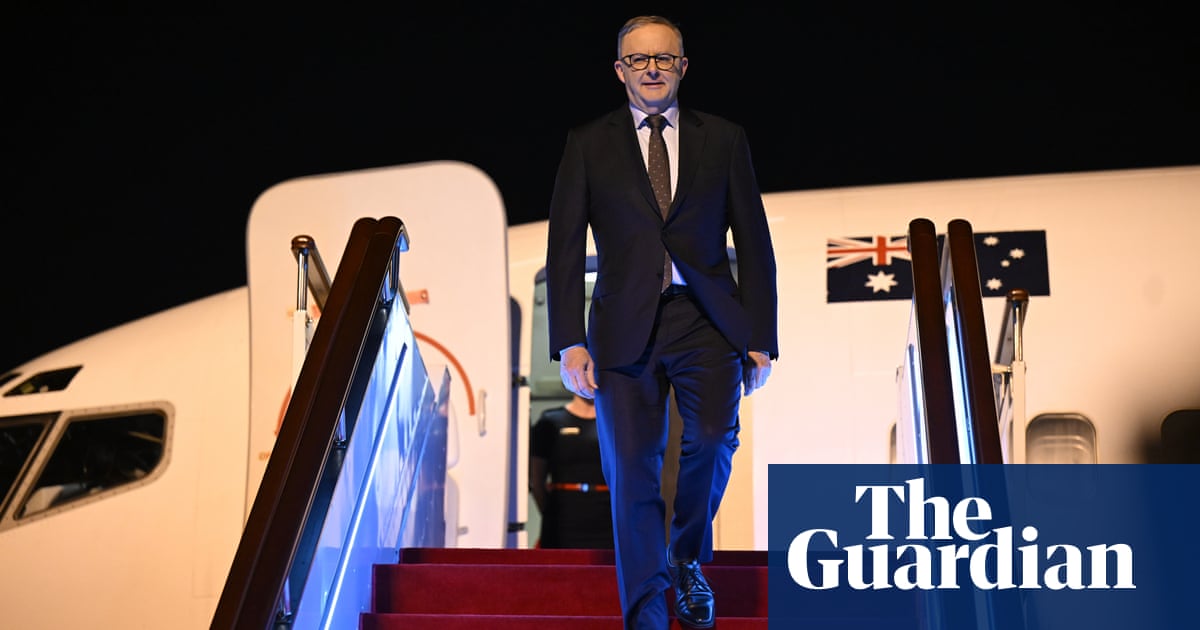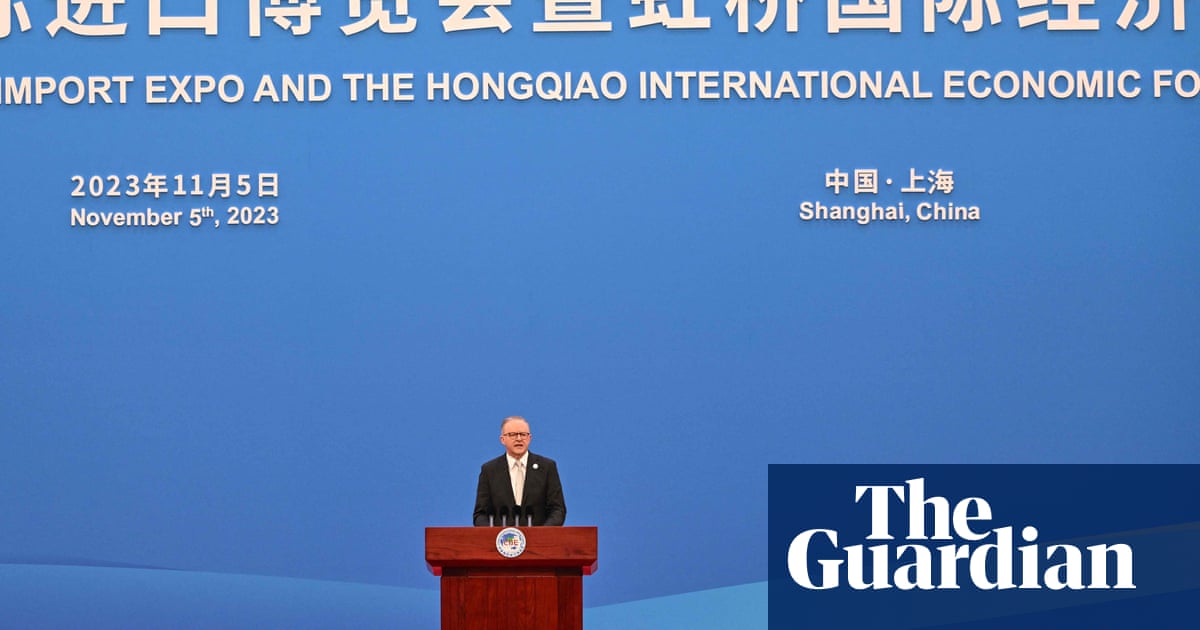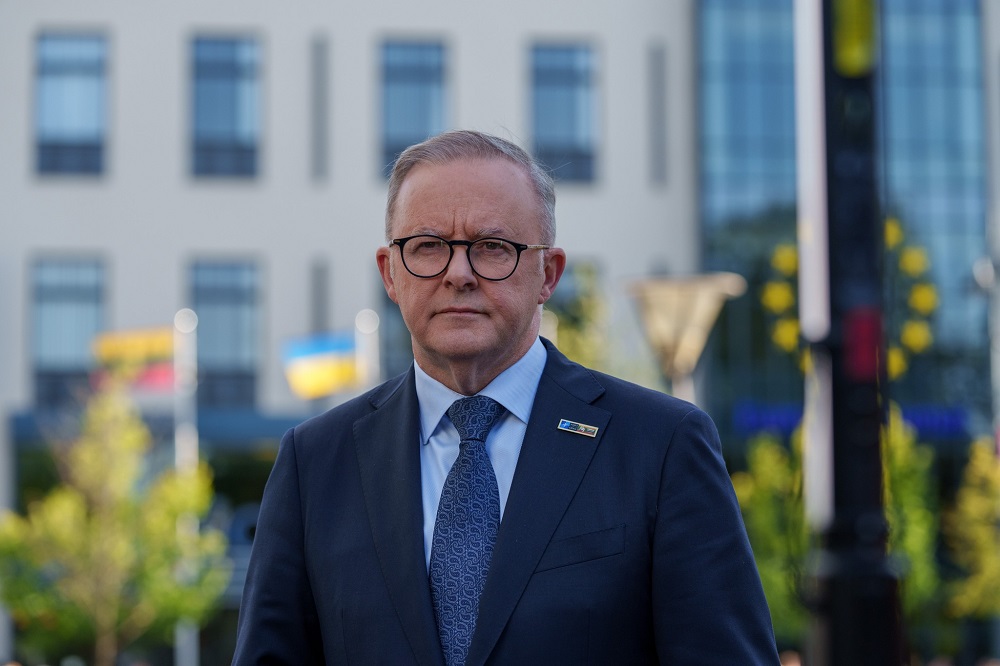Digital Snapshot
by Sophia Brook
Ensuring a stable and productive relationship?
#11/23
09 November 2023
‘Before the election, we said to the Australian people we would work to stabilise the relationship with China without compromising our sovereign interests. And that’s what we’ve done.’
– Foreign Minister Penny Wong
After his visit to the USA at the end of October, which, according to White House Indo-Pacific Co-ordinator Kurt Campbell, has “given Australia and the United States a boost for dealing with China”, PM Anthony Albanese travelled to the PRC this week. The visit had been much anticipated, being the first visit of an Australian PM to China since 2016, and, for added weight, it was timed to coincide with the 50th anniversary of PM Gough Whitlam’s historic visit to the country in 1973. The Australian government had tried to lower expectations on the Chinese side prior to the visit as a result, with Albanese stating that there would be ‘no room for non-government engagements’ and that ’just opening up that engagement’ would be seen as an achievement.
In what media outlets referred to as an ‘18-month stabilisation campaign’, the Australian government carefully laid the groundwork to frame the visit in the correct light. An endeavour that appears to have been reciprocated on the Chinese side, as both governments made noticeable concessions prior to the actual event. Most notable among these were China’s decision to release Australian journalist Cheng Lei, who had been detained for three years, and its lifting of trade bans on a series of Australian products. Very timely, the All-China Journalists Association (ACJA) in Beijing, in cooperation with the Melbourne-based Asia Pacific Journalism Centre, also arranged a ‘closely guided eight-day tour’ for four Australian journalists to China, three weeks before Albanese was due to visit. Meanwhile, on the Australian side, the government announced in October that Chinese company Landbridge would be allowed to keep its lease of the Port of Darwin – something Anthony Albanese had previously criticised as a ‘grave error of judgment’. This perceived positive re-framing led advocacy groups to urge the PM not to forget about persisting human rights violations for the sake of improving bilateral relations. In answer to these concerns, Albanese stated that ‘We disagree on the basis of our political systems, on issues like human rights, on issues such as access to the South China Sea, the East China Sea, the Taiwan Straits, we think that the UN Convention on the Law of the Sea, allowing for that free flow of trade through those waterways are very important for Australia. […] and we’ll put those positions strongly, clearly and directly to China.’ In this context it is important to note that on the Australian side, recent developments have been referred to as a ‘stabilisation’ of the relationship not as a ‘reset’.
Both China and Australia regarded the visit as an opportunity to raise issues of concern to their respective national interests. Australia was hoping to make progress in its efforts to secure the release of detained Australian writer Yang Hengjun, who has been imprisoned in China since 2019, and eliminate the last remaining trade bans, including on wine, lobster and blacklisted abattoir exports. China was hoping for Australia’s support of its application to join the CPTPP and an easing of restrictions on Chinese investment in the Australian resources and renewable energy sectors.
The visit was divided into two parts, with a predominantly economics focused stop at the China International Import Expo in Shanghai and political meetings with President Xi Jinping and Premier Li Qiang in Beijing. Despite the thematic split between economy and politics, the Australian government firmly stated that Australia would not return to treating security and economic issues separately in the context of bilateral relations.
In his first speech after his arrival in Shanghai, Albanese repeatedly emphasised that both nations had ‘prospered thanks to the certainty and stability that is made possible by rules-based trade’. This has been interpreted as an implicit rebuke of China’s rather blunt tactics in relation to its recent trade stoush with Australia. Albanese further stressed that it was a government’s role to create the ‘right conditions for business’ and to eliminate ‘unnecessary barriers to trade and investment by fostering a level playing field and by working towards inclusive economic growth’. On the Chinese side, the Australian government was praised for its commitment to more effective relations with China, but Albanese was also warned ‘not be kidnapped by the United States in his relations with Beijing’.
It was clear from official comments that China would like to secure Australia’s support for its application to join the CPTPP. When asked if his government was considering providing this support, Albanese gave an evasive answer, merely stating that ‘any country must demonstrate that it can meet the high standards of the agreement’ and that all applications to join the CPTPP would be ‘dealt with in an appropriate way’. As experts expected, this ‘failure to push back more forcefully’ on China’s ambitions to join the partnership sparked concerns in Japan, which reiterated that it would not tolerate China joining the pact.
Summing up his meeting with President Xi Jinping in Beijing on Monday, Albanese stated that it was ‘one of goodwill’, in which they discussed issues pertaining to trade and ‘the importance of stability in the region’. Albanese also mentioned that he ‘raised consular and human rights issues’ but did not go into detail on what exactly had been discussed. President Xi lauded the talks as a ‘new starting point for Sino-Australian relations’, but as he is in desperate need of positive narratives for his own national approval rating, he was expected to apply ‘smile diplomacy’ throughout the visit.
In a ‘Statement of Joint Outcomes’, the leaders confirmed their support for the Comprehensive Strategic Partnership, agreeing that ‘we should not be defined by our differences, recognise that they are there, but also recognise the mutual benefit that we have’ and that ‘the wise navigation of differences is an important element of strengthening our relationship’. In keeping with this theme, they announced the resumption of annual talks between leaders, ministers and officials. They also agreed to introduce ‘three to five year multi-entry visas for visitors and business people on a reciprocal basis’.
Although Albanese’s visit on the whole was more of a symbolic gesture rather than an occasion for policy-making – some referring to it as an ‘elaborate choreography of rapprochement’ – for now, it appears to have been effective in its intention of paving the way for a kind of working stability. However, as issues such as China’s poor human rights record, its territorial claims in Taiwan and in the South China Sea and its efforts to increase its influence in the Pacific region remain unchanged, any stability might be temporary.
Post-Visit:
Statement on joint outcomes of the China-Australia annual leaders’ meeting | Prime Minister of Australia
Press Conference – Beijing – People’s Republic of China | Prime Minister of Australia
ANTHONY ALBANESE, PRIME MINISTER: We’ve just concluded two very successful meetings. Firstly, I met with Chairman Zhao, the equivalent of our Speaker in the National People’s Congress. That was an important meeting to discuss the bilateral relationship, and to discuss future cooperation, including e…
Press Conference – Beijing – People’s Republic of China | Prime Minister of Australia
ANTHONY ALBANESE, PRIME MINISTER: Well, it is wonderful to be here in Beijing following a very successful visit in Shanghai. The trade fair yesterday was a real highlight. Some 250 Australian businesses. What it shows is that trade is about Australian jobs. And that’s what my Government is about. A…
Opening session of the China International Import Expo | Prime Minister of Australia
Premier of the People’s Republic of China, Your Excellency Li Qiang.
‘A handsome boy from Australia’ and an invite for the president: The key takeaways from Albanese’s China visit
Anthony Albanese is wrapping up in China after a whirlwind three-day trip aimed at stabilising ties between the two countries. From an invite to Australia to symbolism and plenty of talk about friendship, these are the key takeaways from the visit.
‘Handsome boy’: Albanese, Xi to resume annual talks
An agreement to restore dialogue between Australian and Chinese leaders, ministers and officials represents culmination of 18 months of diplomacy by both sides.
Two proverbs tell the story of two leaders trying to put bygones behind them
Xi Jinping chose a Chinese proverb about gratitude to welcome Anthony Albanese to Beijing — a reference to diplomatic ties forged by Gough Whitlam. But 50 years later another is equally apt: let sleeping dogs lie, writes David Speers.
China hails ‘new starting point’, Albanese, Xi stabilise relations
Australia and China are poised to resume the annual dialogue between leaders, Anthony Albanese has hinted following his historic meeting in Beijing on Monday night with Chinese President Xi Jinping.
Albanese to echo Whitlam as he prays for a good harvest in Xi talks
The prime minister will visit the Temple of Heaven in Beijing on Monday morning before a significant meeting with China’s president, Xi Jinping
A smiling Xi is a wolf warrior in sheep’s clothing
The Chinese president’s retreat from wolf warrior to a smiling diplomat was on full display when he met Anthony Albanese, but how long will that last?
‘At a new starting point’: Albanese invites Xi to Australia after historic summit in Beijing
Prime Minister Anthony Albanese has invited Chinese President Xi Jinping to visit Australia during a “very successful” meeting in Beijing.
Nice to be in good books with Beijing but the catch remains
Subscribe to The Australian to get unrestricted digital access, home paper delivery, Apps for iPad and Android, member only +Rewards and much more…
Albanese arrives in China for landmark visit, says it’s in ‘our national interest’
Albanese will meet Chinese president Xi Jinping and premier Li Qiang, on the first visit to China by an Australian prime minister since 2016
Albanese offers gentle rebuke over China’s ‘unnecessary barriers to trade’ at Shanghai expo
Australian prime minister pushes the benefits of ‘rules-based trade’ after a period of unilateral sanctions imposed by China
Albanese advises China to play fair on trade
Anthony Albanese said China has a duty to itself and the region to practise free and fair trade, and expressed confidence Beijing’s remaining sanctions on Australian exports will be lifted.
China warns PM don’t be ‘kidnapped’ by US interests
China says Albanese’s visit is a chance to reset relations but remains worried Washington is pulling the strings.
Between Chinese grandeur and Australian pragmatism
Paul Keating may have been the first Australian PM to visit China “and remain level-headed throughout”. Anthony Albanese will crave a similar tick of approval.
Albanese leaves door open for China to join transpacific trade pact
Subscribe to The Australian to get unrestricted digital access, home paper delivery, Apps for iPad and Android, member only +Rewards and much more…
Anthony Albanese lands in China for talks with Xi Jinping
Subscribe to The Australian to get unrestricted digital access, home paper delivery, Apps for iPad and Android, member only +Rewards and much more…
Pre-Visit:
Australia’s opportunity to help China be mindful of the society of states | The Strategist
At their press conference last week, US President Joe Biden recounted to Australian Prime Minister Anthony Albanese a conversation he’d had with Chinese leader Xi Jinping. Xi asked him why the US was ’working so…
Openly discussing differences can help stabilise Australia–China relations | The Strategist
Appreciation of differences, more so than of common interests, is essential to maintaining most meaningful relationships over time. It’s odd and a bit unfortunate, therefore, that common interests often limit the frame of reference for…
PM must not play Xi Jinping’s trade games
Anthony Albanese needs a philosophical framework that avoids sovereignty and international law being traded for economic rewards.
Penny Wong urges China to act responsibly as Australia moves to stabilise ties with Beijing
Subscribe to The Australian to get unrestricted digital access, home paper delivery, Apps for iPad and Android, member only +Rewards and much more…
‘Maybe I just miss being called a bogan’: From a Hong Kong jail, Gordon Ng writes fondly about his home in Sydney
Hong Kong community and human rights advocacy organisations are calling on Prime Minister Anthony Albanese to use his upcoming visit to China to advocate for a detained Australian citizen.
Biden’s Indo-Pacific chief talks of ‘renaissance’ between Australia and US
Kurt Campbell also revealed that the US had issued stern warnings to the Chinese regime against further intrusions into the Philippines’ maritime territories.
Australia tries to lower Chinas expectations ahead of Albanese meeting with Xi
Subscribe to The Australian to get unrestricted digital access, home paper delivery, Apps for iPad and Android, member only +Rewards and much more…
Television Interview – ABC Insiders | Prime Minister of Australia
DAVID SPEERS, HOST: Prime Minister, thanks so much for giving us some time here in Washington.
PM wants a ‘no surprises’ relationship with China
Anthony Albanese promises frank exchanges on his visit to Australia’s largest trading partner, with each country knowing where the other stands.
How the WTO helped Australia repair its trade ties with China
Australia’s resistance to Chinese coercion helped win the trade war, but the international trade organisation’s role should not be underplayed.
As Beijing beckons, the fight for Albanese’s ear on China
As Anthony Albanese prepares to meet Xi Jinping, two schools of policy in Canberra are competing to steer the PM’s approach.
Albanese prepares to visit China
Fresh from his visit to the US, Prime Minister Anthony Albanese is preparing to pivot to his next mission, a trip to China.
Labor’s re-engagement with China
Preparations are under way in China for Prime Minister Anthony Albanese’s visit, but optimism for a restoration of ties is clouded by concerns about Australia’s policy alignment with the US.
The ‘drums of war’ are receding, but Anthony Albanese still faces many uncertainties on his trip to China
There are limits around what Australia might hope to achieve and what it should expect in Beijing, but there is room for cooperation.
Albanese’s twin trips a balancing act on US and China
Anthony Albanese’s visits to Washington and Beijing will inevitably make the Australian PM a conduit and sounding board for both Joe Biden and Xi Jinping.
Visit to the People’s Republic of China | Prime Minister of Australia





























